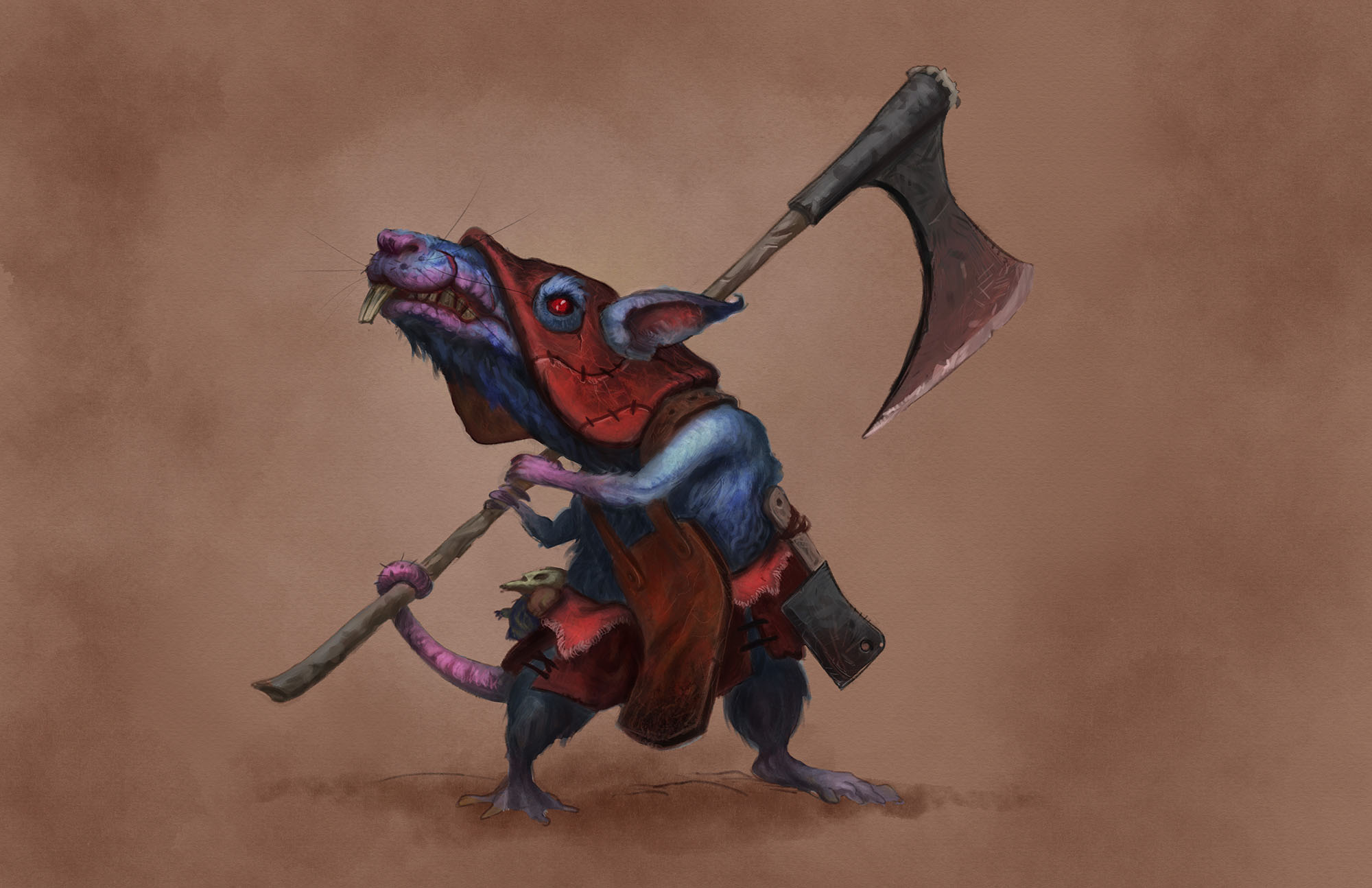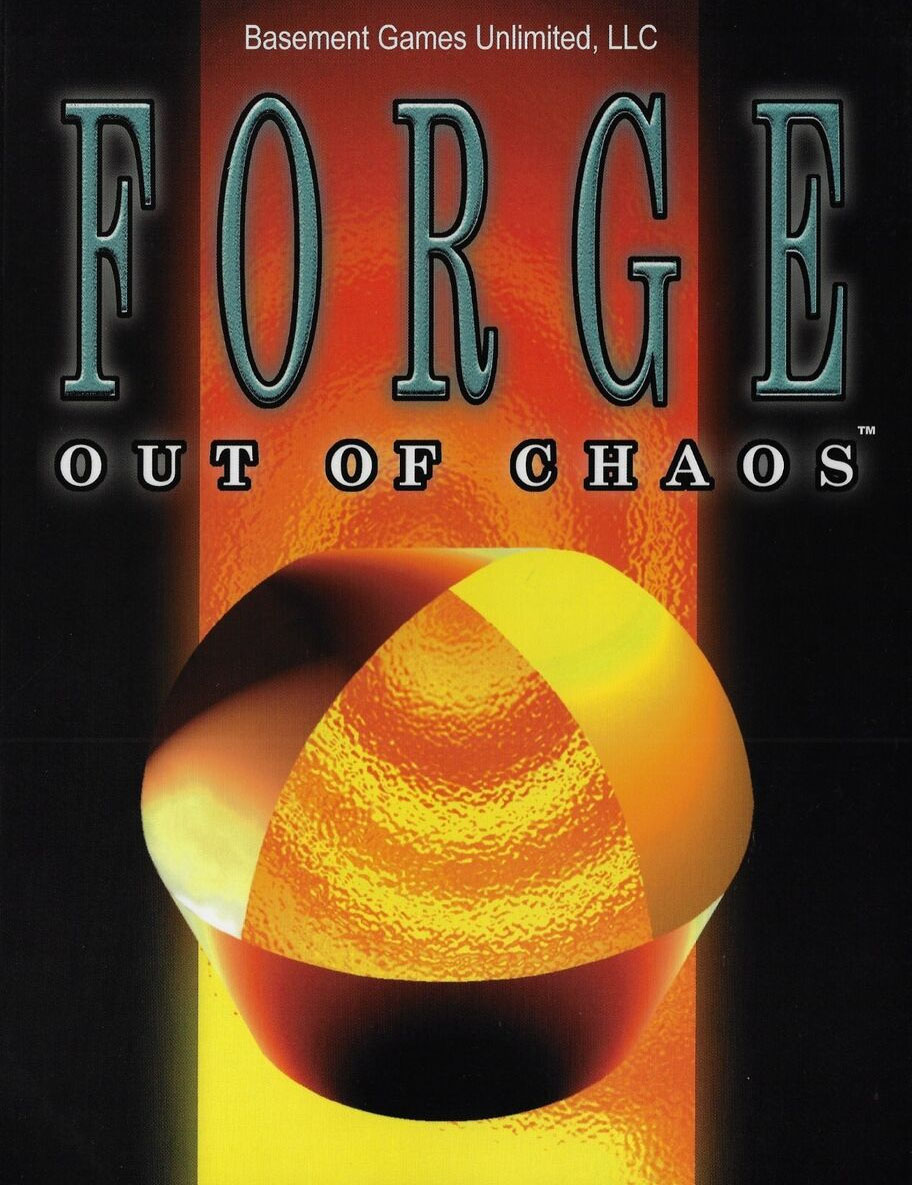
SESSION 41D: BACK AMONGST THE RATS
August 15th, 2009
The 23rd Day of Kadal in the 790th Year of the Seyrunian Dynasty
Now it was a question of their next goal: Should they pursue the Idol of Ravvan? Track down Arveth at the Temple of Deep Chaos? Go to Alchestrin’s Tomb in the Necropolis? There were at least nine different leads tantalizing them.
Ultimately, however, the temptation of Wuntad’s association with (and his occasional appearances at) Porphyry House was insurmountable. Elestra knew it to be a high-class brothel located near the border between the Guildsman’s District and the Warrrens, but little else. (“Why would I know more than that about a brothel?”) They suspected that one of the sewer routes leading from the Temple of the Rat God would take them there, and they decided that the element of surprise to be gained from using such a route was worth the extra effort involved.
When they returned to the temple, however, they found four watchmen standing guard before the outer door. The surrounding buildings had been evacuated. When Tor went to speak with the watchmen he learned that a major operation involving watchmen from across the city had attempted to “root out those filthy rats”. But eight watchmen had been killed in attempting to explore the areas below the temple and now they were simply bricking up the basement to seal the problem away.
The watchmen weren’t supposed to let anyone through, but since it was Tor they didn’t think it would be a problem. Tor thanked them kindly and led the others through the sanctuary.
On the level below they found six more of the watch bricking up the tunnel leading to the warrens below. They recognized Tor, too, and when they learned that the wanderers were planning to go below they offered to hold off their efforts for an hour.
Tor shook his head. “We’re just passing through. I don’t think we’ll be coming back this way. Finish what you’re doing. We’ll take care of the rest.”
“If it’s not too much trouble, could you keep an eye out down there? Three of those who died… We weren’t able to recover their bodies.”
They promised that they would bring them back if they could.
Halfway down the tunnel they triggered the first of the ratlings’ traps: An explosive charge sent a shower of stinking, diseased offal into the air. Tee detected two more of the tripwires along that length of tunnel, carefully disabling each of them before allowing the others to pass. The traps were crudely constructed, but cunningly hidden.
When they reached the north-south T-intersection at the end of the first tunnel, a squeaking, gibberous swarm of huge rats rushed towards them from the north. As Tee stepped out to confront them, however, three ratlings to the south popped out of some sort of concealed culvert and fired dragon rifles at her back. As Tor joined Tee in cutting down the swarm of rats from the north, Agnarr ran after the ratlings to the south. The ratlings fell back while continuing their volleys of fire… taunting Agnarr into a spew of fire from carefully prepared pots of alchemist’s fire.
Agnarr had almost reached them again when a board full of poisoned spikes swung down from the ceiling above – not only piercing his shoulder with a painful, burning wound, but wedging itself tightly into place and blocking the tunnel. By the time Agnarr had forced the board aside, Tee had joined him. She ducked through first, finding the ratlings waiting with another volley of fire that she narrowly dodged.
If she worked her way carefully down the tunnel in an effort to avoid the traps she knew were waiting, the ratlings would tear her apart with their rifle fire. Throwing caution to the wind, Tee threw herself down the hall – trusting to her instincts and reflexes to avoid the seemingly never-ending stream of dangers.
The ratlings fell back before her rush – sometimes trusting to their tripwires; in other cases chopping at concealed ropes to release counterweighted doom. Tee avoided the worst of it, and even managed to drop one of the ratlings with a sharply placed arrow.
The ratlings fled back around a corner and Tee pulled up for a moment to wait for the others – picking their way through the spent traps behind her – to catch up.
There was an explosion of chittering from around the corner and something large and bulky was thrown around it, bouncing to a halt near Tee’s feet.
It was the head of one of the dead watchmen. His badge had been spiked to his forehead.
Tor, coming up beside Tee, looked down and felt his heart go cold. He rushed the corner with preternatural speed, dashing through the rapid volley of the ratlings and plunging his sword through the chest of the nearest one in a burst of crackling electricity.
The last of the ratlings fell back and triggered another of the spiked boards. But Tor had no patience or mercy left in him: With a sweep of his sword, he cut the board asunder, leaving a very surprised ratling scurrying backwards in a panic into the chamber of bones. But in two quick steps, Tor was upon the creature, cutting it down mercilessly.
The chamber of bones was still filled with a cascaded avalanche of bones, but three sharp sticks had been raised in the middle of the room – the headless bodies of the three watchmen impaled upon them.
While Tor and Agnarr took up the grisly task of taking down the bodies of the watchmen, Tee headed into the southern passage, checking it carefully foot-by-foot for any additional traps the ratlings may have had a chance to lay.
As she emerged into the slave pen area, however, her focus on tripwires and mud-buried mines turned into a liability: Two ratbrutes, lurking to either side of the door, took her completely by surprise.
For a long moment Tee was frozen in shock. Then, as the massive blades of the ratbrutes swung towards her, she dove forward. She managed to narrowly duck beneath one blade, but the other caught her a glancing blow. A moment later she found herself prostrate on the floor, gasping in a pool of her own blood. (Something which, frankly, had been happening to her too much in the last twenty-four hours.)
Before the ratbrutes had a chance to finish her off, however, reinforcements had arrived.
Running the Campaign: Aftermath of Adventure – Campaign Journal: Session 41E
In the Shadow of the Spire: Index




















